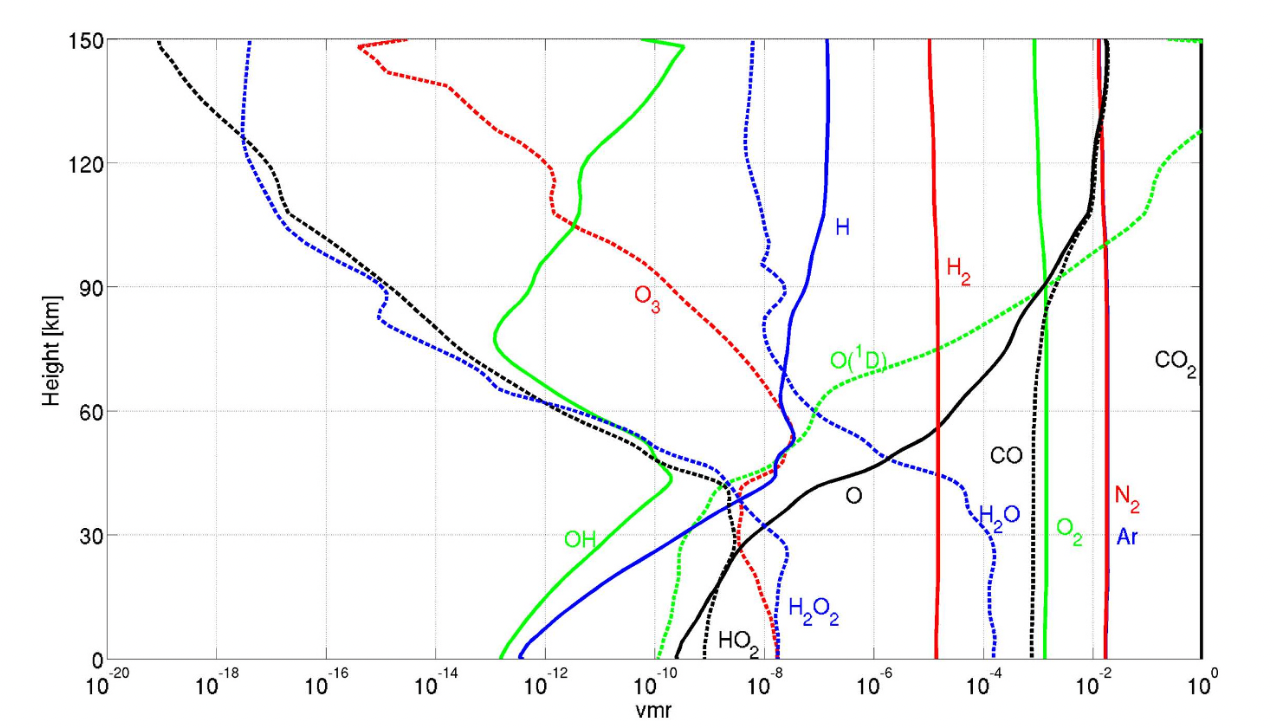Icarus (2019) https://doi.org/10.1016/j.icarus.2019.02.030
Frank Daerden, Lori Neary, S. Viscardy, A. García Muñoz, R.T. Clancy, M. D. Smith, T. Encrenaz, A. Fedorova
General Circulation Models with interactive physical and chemistry processes are the state-of-the-art tools for an integrated view and understanding of the Martian atmosphere and climate system. The GEM-Mars model currently includes 16 tracers for chemical composition and applies a fully online, interactive calculation of the photo- and gas phase chemistry of carbon dioxide (CO2) and water vapor (H2O). These species largely control the chemical composition of the neutral Mars atmosphere through their photolysis products and their subsequent interactions. Water vapor undergoes a complex cycle on Mars as it is transported and interacts with ice reservoirs both at the planet's surface and at water ice clouds, which in turn provide radiative feedbacks. In the photochemical cycles involving CO2 and H2O, the abundances of 5 species have been reported by previous investigations with significant spatio-temporal coverage: CO2, H2O, CO, O3 and H2O2. This paper presents the current status of the atmospheric chemistry simulations in GEM-Mars by comparing them to a selection of these observational datasets as well as to oxygen dayglow emission from O2(a1∆g). The results are consistent with previous model-data comparisons and illustrate that the water cycle and the photochemistry are well implemented in the model. In particular, the simulation of the key reservoir species H2O2 provides a good match to the available data. Model-data biases for ozone columns and oxygen airglow are related to the simulated water vapor vertical profile, as these species have important column contributions from vertical layers at the top of the hygropause.







